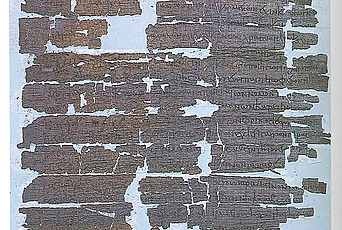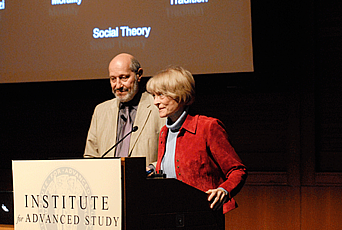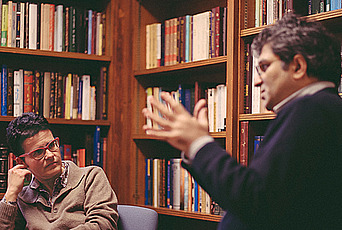The Nativist Prophets of Early Islamic Iran: Rural Revolt and Local Zoroastrianism (Cambridge University Press, 2012) by Patricia Crone, Andrew W. Mellon Professor in the School of Historical Studies, has received numerous major awards. The book, part of which is excerpted here, examines the Iranian response to the Muslim penetration of the Iranian countryside, the revolts triggered there, and the persistence of religious ideas over two millenia in Iran.
Monotheism had been on the rise for some six hundred years in the Near East and Mediterranean by the time the Muslims arrived, having triumphed on the Graeco-Roman side of the border and being well on the way to repeating its success on the Iranian side; but it had also been affected by paganization, in the sense of a tendency for the divine to split into an inaccessible reality and mediator figures, and for the divine to flow into this world in other forms as well. This trend is observable in Judaism in Philo (d. A.D. 50) and has been postulated for the Jews of Mesopotamia as well in this book. It is certainly observable in Christianity itself, based as it is on a great violation of the ontological rules [described above]. But the trend intensified thereafter. By the third century we see it in Judaism, Christianity, Greek and Aramaic paganism, and Gnosticism, and it still had not abated by the sixth. Everywhere there was a tendency for mediator figures to appear (and also for demons to proliferate). The heavens—an elaborate multistoried structure by now—had come to be filled with a huge number of angels. Many were just heavenly messengers without names, or on the contrary mere names for powers that magicians wished to invoke, but others were identified with attributes of God’s such as his wisdom, spirit, or reason/speech (logos), or with deified humans such as Enoch or Jesus, and still others with former deities such as Apollo, Shamash, Bel, Nanai, or the gods of the mushrikūn in the Qurʾān. The mediators in heaven generated counterparts on Earth in the form of divine incarnations, emissaries, and other recipients of divine power such as messiahs, apostles, wonderworkers, spirit-bearers, and saints: these last were beginning to populate the heavens too. Christ apart, angels and saints, strictly separated from God himself, were the two forms in which Christians (and eventually Muslims) found it possible to accept a whole swarm of intermediaries between God and mankind.
Intermediaries proliferated on Earth because people hankered for direct contact with the divine, by touch, sight, or feeling, or by angelification or deification of themselves (magical recipes were available). Accounts of heavenly journeys were hugely popular across the entire religious spectrum. Everywhere people hoped to ascend to the celestial realm, at least for immortal life there after death, but preferably also for a visit in the here and now; and heavenly journeys usually involved face-toface encounters not only with angels, but also with God himself. The guest in heaven would also be initiated into divine secrets such as the workings of the cosmos, past and future events, or the meaning of all things, and great power might be obtained on such journeys if one could accomplish them (but they were difficult and dangerous). The dominant mood was one of wanting out of this world. Above all, people wanted to get out of their own bodies, which kept them captive in the circumscribed world of mundane needs, chaining them to a daily treadmill with its endless demands, and holding them hostage to the powers that be...



